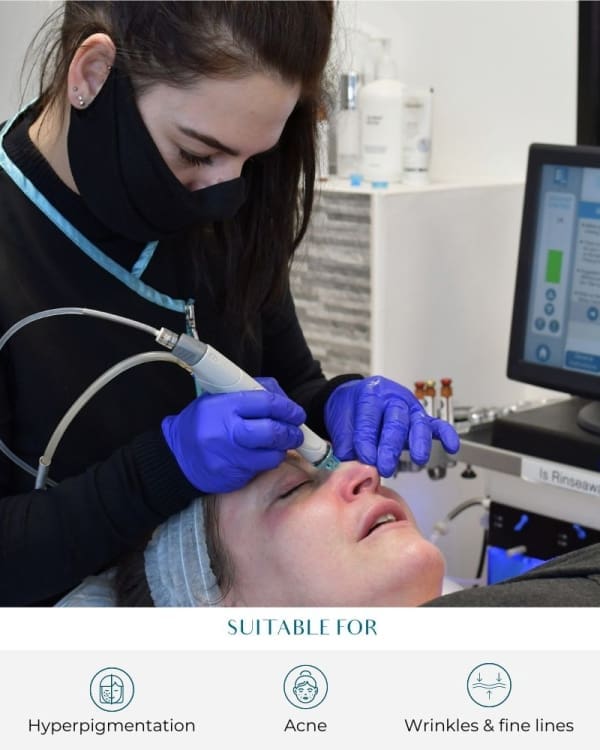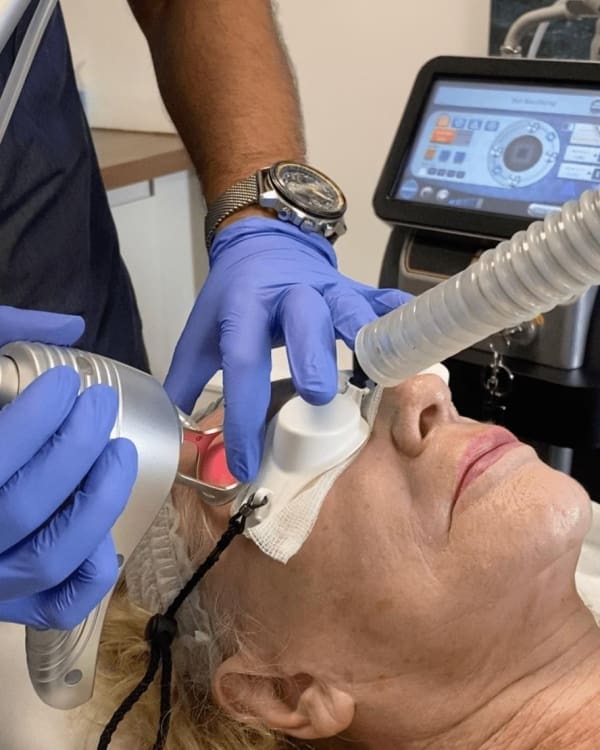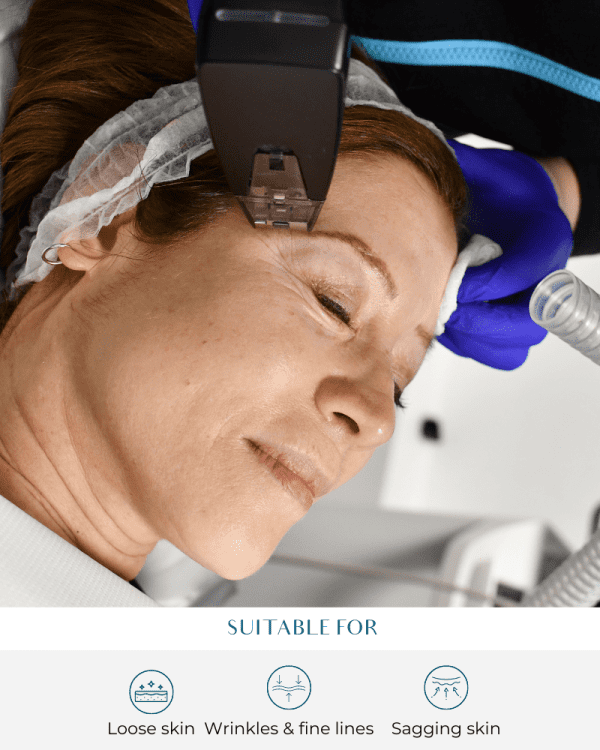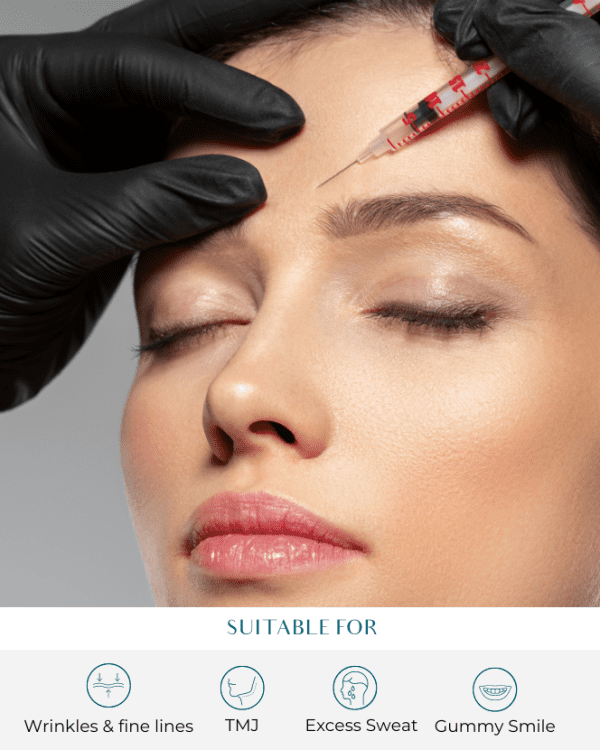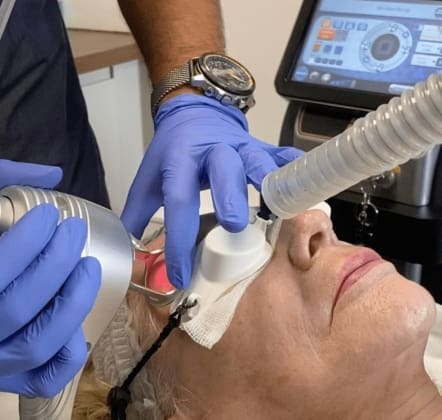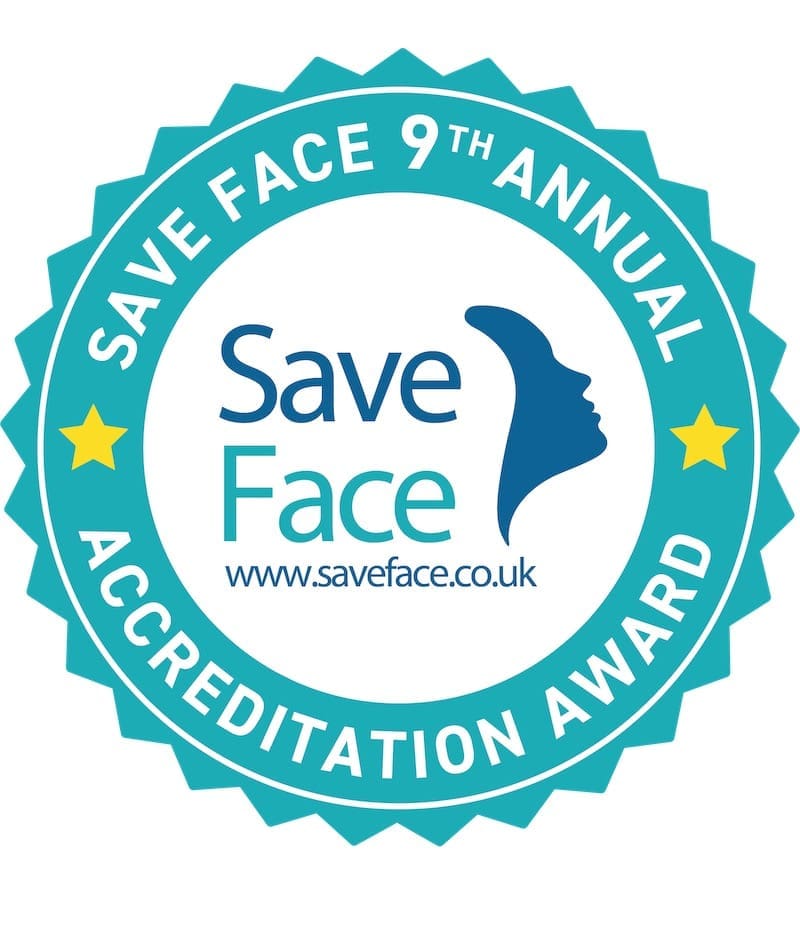Verruca On Foot Removal: Complete Guide
Verruca on Foot Removal: Your Complete Guide to Plantar Wart Treatment
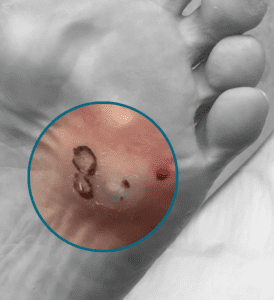
Verrucas, also known as plantar warts, are a common and often stubborn foot problem caused by the human papillomavirus (HPV). At Perfect Skin Solutions we specialise in verruca on foot removal, combining advanced techniques with expert care to get you healthy skin and your confidence back.
What are Verrucas and How do they develop?
Verrucas are small warts that appear on the soles of the feet and are caused by the wart virus—specifically the human papilloma virus (HPV). This virus enters the skin through tiny cuts or abrasions, often picked up from contaminated surfaces like swimming pool floors or communal showers. People with a weakened immune system are more likely to develop verrucas and other warts.
Key features of verrucas:
- Small lumps with rough surfaces
- Skin coloured or slightly darker
- Tiny black dots (clotted tiny blood vessels)
- Surrounded by excess hard skin or dead skin
- Painful when pressure is applied, especially when walking
Warts and Verrucas
Warts and verrucas are small, rough lumps or growths on the skin, often caused by the human papillomavirus (HPV). These skin lesions can appear anywhere on the body but are most commonly found on the hands, feet and face. Verrucas, also known as plantar warts, specifically develop on the soles of the feet and can be very painful. Both warts and verrucas are highly contagious, spreading through direct skin contact or by touching contaminated surfaces. If you’re unsure how to treat warts or verrucas, it’s best to seek medical advice to get the right treatment.
How are Verrucas spread?
Verrucas and warts are spread by direct contact with the HPV virus, often from walking barefoot on contaminated surfaces. Wearing flip flops in communal areas and keeping feet clean can help prevent passing the virus to others or contracting it yourself.
A strong body’s immune system can fight off the virus, reducing the chance of developing verrucas.
What is a Verruca?
verruca is a type of wart that appears on the sole of the foot, often very painful and uncomfortable. These warts can have tiny black dots in the centre which are tiny blood vessels. Due to the pressure on the feet, verrucas can become flat and may cluster together to form mosaic warts. They are usually skin coloured or slightly darker than the surrounding skin. To treat verrucas effectively you need to keep your feet clean and dry and not share socks, shoes or towels. Using a pumice stone or nail file to gently remove excess hard skin can help reduce the size of the verruca and alleviate discomfort.
Types of Warts
- Plantar warts (verrucas): Commonly found on the soles of the feet; can be single or form mosaic warts (clusters).
- Mosaic warts: Multiple small warts grouped together, often more difficult to treat.
- Plane warts: Flat, smooth and usually found on the face or legs.
- Genital warts: Found in the genital area; require different treatments.
Causes and Symptoms
Warts and verrucas are caused by the human papillomavirus (HPV), which spreads through skin-to-skin contact or by touching contaminated surfaces, such as swimming pool floors or communal showers. The virus can enter the skin through small cuts or openings and may take months to develop into a visible wart or verruca. Common symptoms include small, rough lumps or growths on the skin that can be painful or itchy. In some cases warts and verrucas may bleed or become infected. If you experience any of these symptoms it’s best to seek medical advice to prevent further complications.
Verruca on Foot Removal: Treatment Options
There are several ways to treat warts and verrucas and they need to be treated properly to get rid of them completely. Removing the top layer of the verruca can help treatments penetrate more effectively. The best verruca treatment will depend on the size, location and persistence of the wart, as well as your overall health and immune system function. Finding the right treatment is key to getting rid of these stubborn skin issues.
Why Choose Perfect Skin Solutions?
We use a combination of dry needling and advanced laser treatment with the Ultraclear laser machine to treat stubborn verrucas, for effective verruca removal with minimal discomfort and best chance of healthy skin.
If you have plantar warts or other types of warts and verrucas, contact us today for medical advice and a treatment plan.
1. Topical Treatments
Salicylic acid: Available over the counter as topical solutions, medicated plasters or pads. Salicylic acid works by removing dead skin and gradually breaking down the wart. For best results:
- Soak the affected area in warm water to soften the skin.
- Use a pumice stone, emery board or nail file to gently remove excess hard skin (never share these tools to avoid spreading the wart virus).
- Apply the salicylic acid as instructed, cover with a waterproof plaster or duct tape.
- Repeat daily for several weeks; improvement may be seen in a few weeks but complete removal can take up to two years.
It’s worth noting that about two thirds of verrucas in children disappear within two years without treatment.
2. Cryotherapy (Liquid Nitrogen)
Liquid nitrogen is used to freeze verrucas and warts, causing the affected tissue to die and fall off. A cotton bud can be used to apply liquid nitrogen directly to the verruca, ensuring precise targeting of the affected area. Multiple sessions may be required especially for thicker or mosaic warts. Some discomfort, redness or blistering is normal after treatment.
3. Laser Treatment
- Laser therapy is a powerful option for stubborn verrucas that have not responded to other treatments. At Perfect Skin Solutions we often follow up dry needling with laser treatment using the Ultraclear laser machine for best results. Laser treatment targets the blood supply to the wart, promoting natural healing and healthy skin regeneration.
4. Dry Needling
- Dry needling involves puncturing the verruca to stimulate the body’s immune system to fight off the wart virus. This is often combined with laser treatment for enhanced efficacy.
5. Surgical Removal
For persistent or painful verrucas, surgical removal under local anaesthetic may be considered. The wart is excised and the area is allowed to heal naturally. This is reserved for cases where other methods have failed as there is a small risk of nerve damage or infection.
6. Other Treatments
There are several other verruca treatments to consider including duct tape, immunotherapy and medicated plasters.
Duct tape: Cover the wart with duct tape for several days, then soak and gently file the area, can sometimes remove warts.
Immunotherapy: Stimulates the body’s immune response to fight the HPV virus, especially useful for those with a weakened immune system.
Medicated plasters: Convenient for continuous topical treatment, especially for small warts and hard to reach areas.
Home Care Tips for Verruca Treatment
- Keep feet clean and dry; change socks daily.
- Use a pumice stone or nail file to reduce excess hard skin, but never share these tools.
- Cover the affected area with a waterproof plaster when swimming to avoid passing the virus to others.
- Wear flip flops in communal showers and around swimming pools.
- Follow all instructions carefully when using topical treatments.
- Don’t pick at warts or verrucas to prevent infection and spreading.
Diagnosis and Prevention
Diagnosis of warts and verrucas is usually done by a visual examination by a doctor or dermatologist who may use a magnifying glass or other tools to closely examine the affected area. To prevent warts and verrucas, good hygiene is key. Wash your hands regularly and don’t share personal items like towels and shoes. Wearing flip flops in public showers and using waterproof plasters when swimming can also reduce the risk of infection. Keeping your feet clean and dry and using a pumice stone or nail file to remove excess hard skin can further help prevent verrucas. By taking these precautions you can reduce the risk of warts and verrucas and have healthy skin.
When to Seek Professional Medical Advice
- If home treatments haven’t worked after several weeks
- If the wart or verruca is painful, spreading or showing signs of infection
- If you have diabetes, poor circulation or a weakened immune system
- If you’re unsure whether a lump is a wart or verruca
- A podiatrist or dermatologist will advise on the best treatment for you, including advanced treatments like laser, cryotherapy or surgical removal.
FAQs
How long does it take to get rid of a verruca?
Verrucas can take several weeks to two years to clear up depending on the treatment and your body.
Can I treat warts and verrucas at home?
Yes, many topical treatments are available but persistent or painful cases should be seen by a professional.
What are the signs of a verruca?
Small rough lumps with tiny black dots on the sole of the foot, often surrounded by hard skin and painful when pressed.
Get started with healthy, pain free feet. Book your verruca treatment at Perfect Skin Solutions today!





















































